If you find yourself with a large harvest of tomatoes and don’t have the time or energy to process them right away, do yourself a favor and freeze the tomatoes. Not only can you process them later in the year, there are several other advantages of freezing them now so that you save both time and money in the future.
It never fails, at the start of summer, you wait and wait for your tomatoes to turn from solid green to their mature color. Whether it be red, yellow, orange, black, or brown, it can seem like a lifetime before your tomatoes start to ripen.
Then when they finally begin to mature within days you are suddenly overrun with pounds of ripe, delicious tomatoes all at the same time! And if you don’t preserve them quickly, your tomatoes will begin to go bad before you know it.
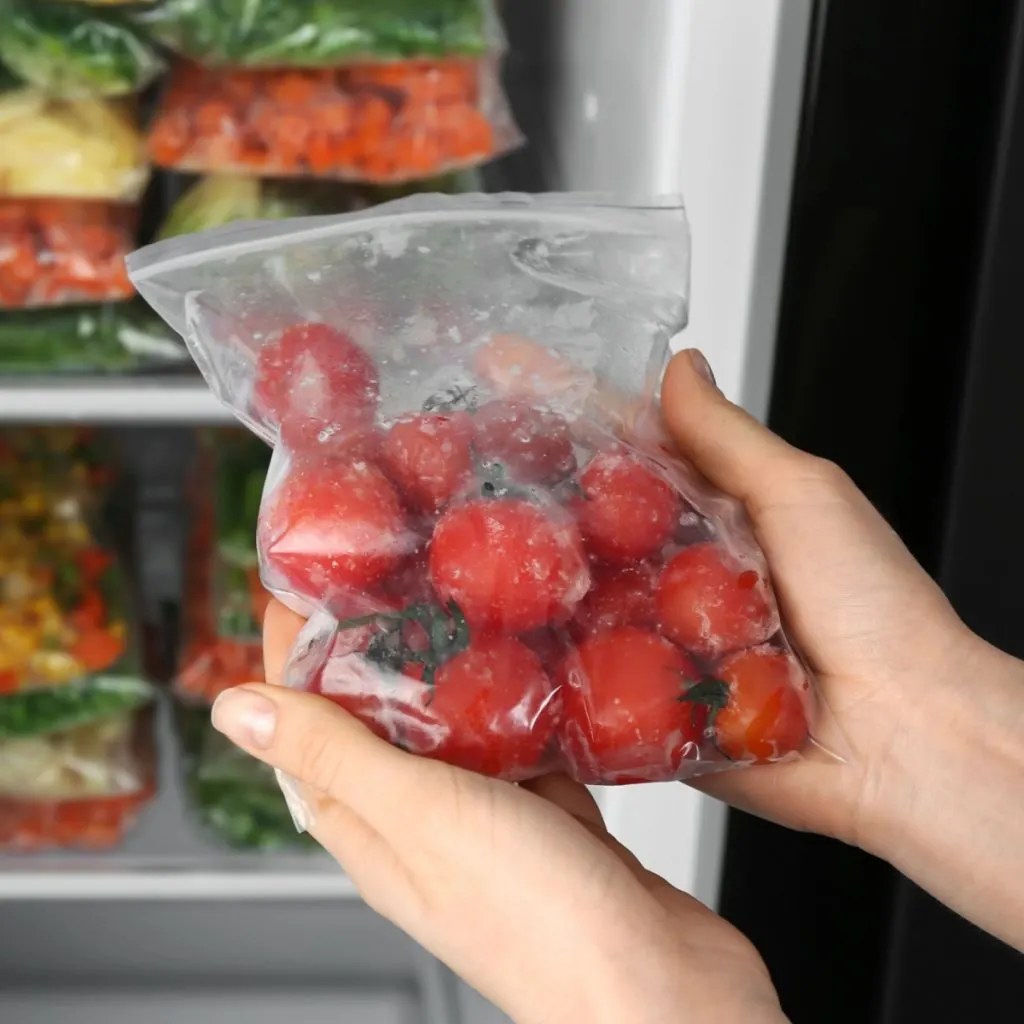
While canning is an excellent way to preserve tomatoes, it can be intimidating for many new gardeners. Even seasoned gardeners who typically preserve the tomatoes with a water bath or pressure canner sometimes get overwhelmed when they are inundated with loads of ripe tomatoes all at once. And that is exactly where freezing comes into play.
It’s fast, you can freeze in small or large batches, and you can decide later on how you want to use your tomatoes instead of at the moment when they become ripe. The best part is that there are several different ways you can choose to freeze your tomatoes – and they are all easy!
Why Freeze Over Canning
The first reason to freeze tomatoes over canning is obvious – it requires no special equipment. You don’t have to worry about not having enough jars or lids on hand or worry that the store shelves are going to be empty of what you need. You also don’t need to purchase or store bulky canning equipment when kitchen space is at a minimum.
Another good reason for freezing tomatoes is that you don’t have to stress over the improper ratio or handling of products. With canning, you have to make sure to have your acidity levels are within the correct range and that you follow USDA approved recipes exactly as they are written. This is the only sure way of knowing that your canned products are safe for consumption.
Freezing tomatoes also gives you the freedom of putting your tomatoes to good use whenever you need them. When canning during the middle of harvest season, you must decide right away whether you are going to make Pasta Sauce, juice, salsa, soups, or diced tomatoes. With freezing, you can just preserve the tomatoes as is and decide later on how and when to use them for different recipes.
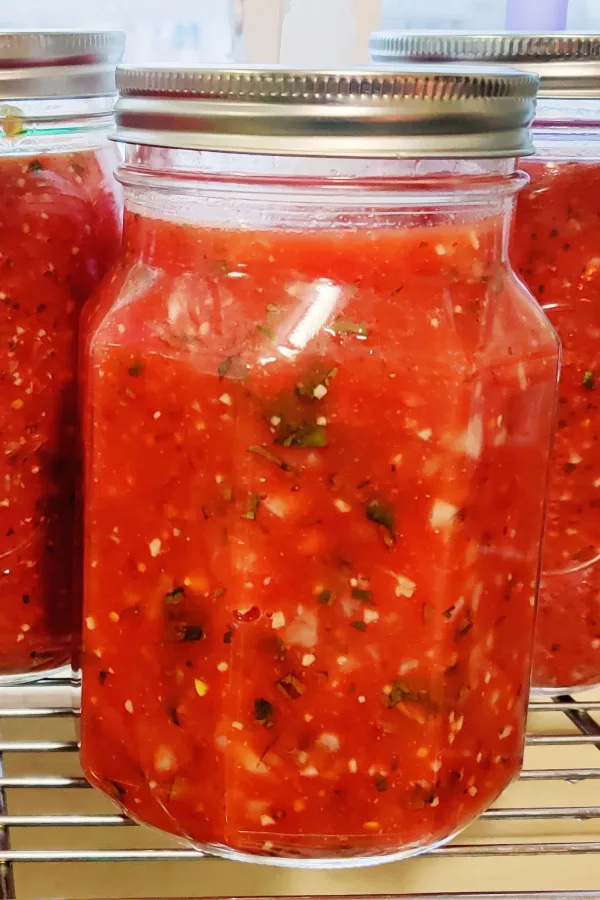
The last reason – and maybe the most important – is that freezing is much easier than canning. It takes minimum effort but the rewards are still huge!
What Containers To Use
To have the best success with freezing tomatoes, you want to choose the right type of container.
For long term storage choose plastic freezer bags that are specifically labeled as “freezer safe” when freezing whole or sliced tomatoes. Standard plastic storage bags will not do a good enough job of preventing freezer burn from occurring. In addition, make sure to remove as much air as possible when sealing each bag.
A vacuum sealer for food storage does a great job of removing the air from the bags. (Affiliate Product Link: NutriChef Vacuum Sealer)
Be sure to label the bags with the contents and date of freezing. Frozen tomatoes should be used within six to eight months for the best flavor and texture.
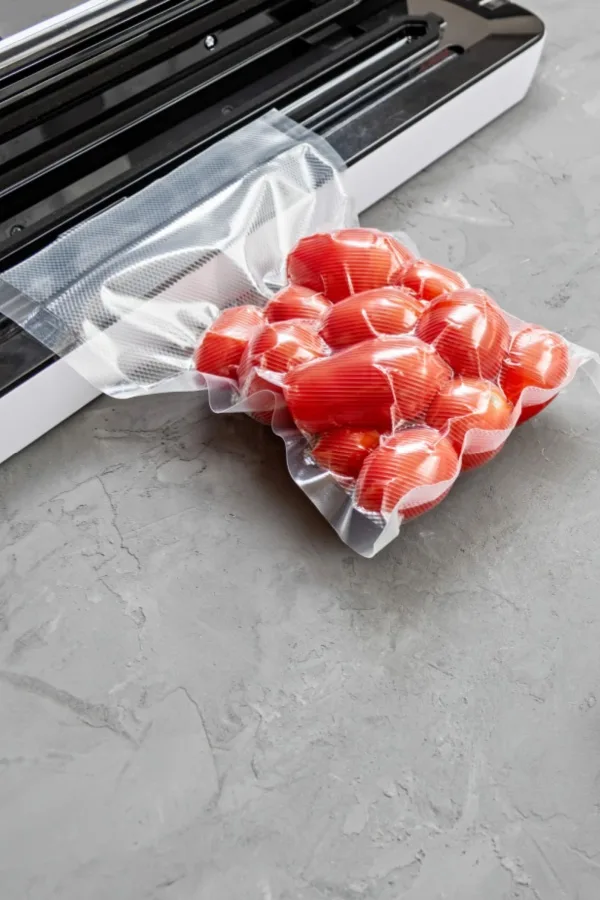
A Note About Frozen Tomatoes
While it’s not a huge deal, keep in mind that frozen tomatoes will not have the same firmness or consistency as fresh tomatoes. After frozen tomatoes are thawed, they become softer in texture, therefore they are best used in cooked dishes like sauces and soups.
You can thaw smaller tomatoes like cherry tomatoes and dwarf varieties to enjoyed in salads, but they still won’t have that fresh-from-the-garden feel and texture.
How To Freeze Tomatoes
Freezing Whole
By far the easiest way to freeze tomatoes is to freeze them whole. There are two ways to freeze your tomatoes whole: With the skins on or with the skins peeled.
Freeze Tomatoes With The Skins Left On
The easiest and quickest way to freeze tomatoes is to freeze them whole with their skins left on. Essentially, you pick the tomatoes, wash and dry them well, and freeze them. It doesn’t get much easier than that!
Once you go to thaw out whole tomatoes, the skins will easily slide off as the tomatoes soften slightly. There is no need for boiling or blanching the tomatoes prior to use.
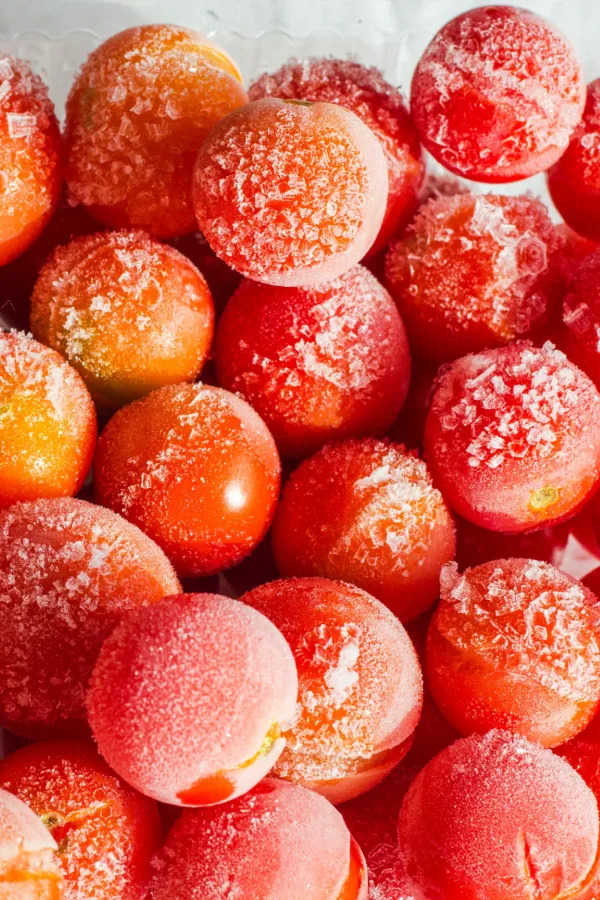
Freezing Tomatoes Without The Skins
Another method is to remove the skin of the tomatoes prior to freezing. This does require an extra step, but it is easy to do.
There are two great ways to remove tomato skins. First, remove the stem end of the tomato and cut a small “X” in the bottom. Then, blanch the tomato in boiling water for about a minute.
Then remove the tomato from the water and place it in an ice bath. When the tomato is cool enough to handle, gently peel off the skin and discard.
You can also peel tomatoes another way. Simply cut the stem end off of the tomato and set it on a baking sheet lined with parchment paper. Place the sheet in the freezer for about 1-3 hours, or until frozen.
Take the tomato out and run it under cold water for a few seconds. The skin should just slide right off.
Whichever method you use, place the skinned tomatoes in a freezer-safe bag, label them, and freeze.
Freeze Tomatoes In Pieces
If you are worried about the amount of freezer space that you have, there is another option. You can cut the tomatoes and freeze them once they have been cut in half, quartered, or diced. However, it is best to remove the skins prior to cutting, using one of the steps mentioned above.
To really save you time and prevent extra guesswork in the middle of the winter, freeze the cut tomatoes in the same quantities you would use in your favorite recipes.
For example, if you always use a 15-ounce can of diced tomatoes for a recipe, add 15 ounces of tomatoes to your freezer storage containers. This makes it easy for you to just grab a bag as needed without having to measure out the amount when you go to create a recipe.
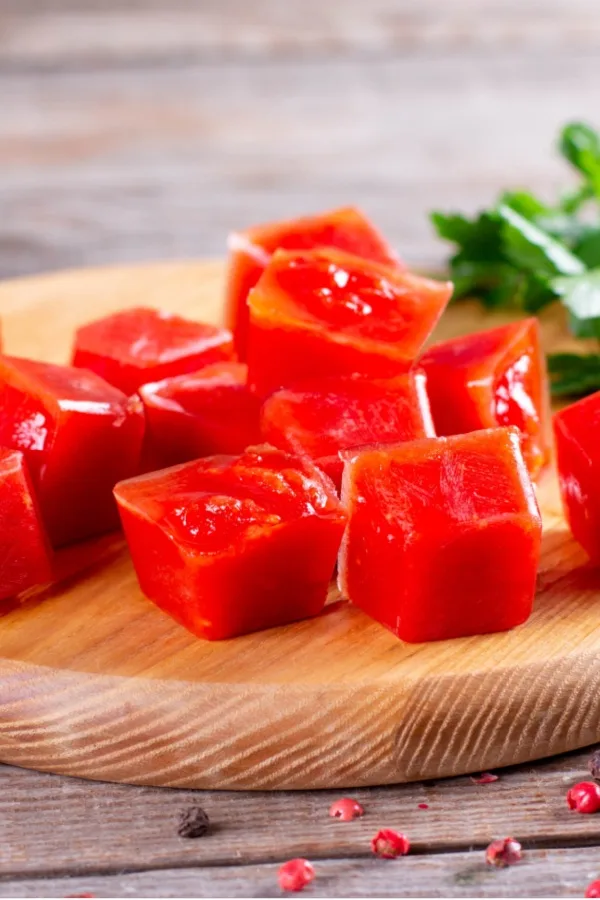
Freezing Pureed Tomatoes Or Tomato Juice
Another great way to save space in your freezer is to process the tomatoes into a puree or juice. Then freeze them into measured out portions.
To make pureed tomatoes first wash the tomatoes and discard any damaged areas. Then, remove the stem and core the tomatoes. Next, cut each one into large pieces.
Place the chunks into a food processor or blender and pulse until your reach the desired consistency. Add the tomato puree to a stock pot. Then cook on high for 10-12 hours or until it has reduced and thickened to the desired consistency. Allow the mixture to cool and then place in freezer-safe containers in desired quantities, cover and freeze.
For tomato juice, add the tomato chunks to a non-reactive stockpot and simmer for 5 to 10 minutes. Run the juice through a sieve or food mill to remove the skin and seeds. Pour the juice into freezer-safe containers in desired quantities, cover and freeze. (Affiliate Product Link: Food Mill)
There you have it! Several different ways to freeze tomatoes so that you can preserve your harvest, the easy way! When it comes time to use those frozen tomatoes, be sure to check out: 3 Great Ways To Use Frozen Tomatoes.
ENJOY!
Follow Our Facebook Page For Even More Great Tomato Growing Tips! I Grow Tomatoes Facebook Page
I Grow Tomatoes is a website created for those who love all things about tomatoes – from planting and growing – to cooking and canning! We publish two articles every week, 52 weeks a year. Sign up today to follow via email! This article may contain affiliate links.
